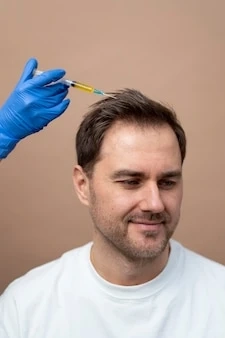Hair loss in men, commonly referred to as male pattern baldness or androgenetic alopecia, is primarily caused by a combination of genetic, hormonal, and environmental factors. Here are the key factors contributing to hair loss in men:
Genetics: Hereditary factors play a significant role in male pattern baldness. If you have a family history of hair loss, particularly on your mother's or father's side, you are more likely to experience it as well.Hormones: The hormone dihydrotestosterone (DHT) is a major contributor to male pattern baldness. DHT is a byproduct of testosterone, and when it binds to hair follicles, it can cause them to shrink and eventually stop producing hair.Age: Hair loss tends to become more common as men age. It often begins with thinning at the temples and crown in their 20s or 30s and progresses with age.Stress: While stress itself does not directly cause male pattern baldness, it can exacerbate hair loss in individuals who are genetically predisposed to it. Stress can lead to changes in hormone levels that may accelerate hair loss.Medications and Medical Conditions: Certain medications, such as those used for cancer treatment, high blood pressure, or depression, can contribute to hair loss as a side effect. Additionally, medical conditions like thyroid disorders or autoimmune diseases can lead to hair loss.Poor Nutrition: A diet lacking essential nutrients, especially protein, vitamins, and minerals like iron and zinc, can contribute to hair loss.Tight Hairstyles: Wearing tight hairstyles or frequently pulling the hair (traction alopecia) can damage hair follicles and lead to hair loss over time.Smoking: Smoking has been associated with hair loss, likely due to its effects on blood circulation and inflammation.Environmental Factors: Exposure to pollutants, harsh chemicals, or excessive sun exposure can damage hair and potentially lead to hair loss.Certain Hairstyling Practices: Frequent use of harsh styling products, excessive heat from hairdryers and straighteners, and aggressive hair care practices can weaken hair and make it more prone to breakage and thinning.Male pattern baldness is a natural and common condition, affecting a significant portion of the male population. While there are treatments available to slow down or partially reverse hair loss, such as medications like minoxidil and finasteride or hair implants, not all individuals will choose to pursue these options. Consulting with a healthcare professional or dermatologist at Evolved Hair Clinic can for guidance on appropriate treatments and strategies for managing hair loss.


